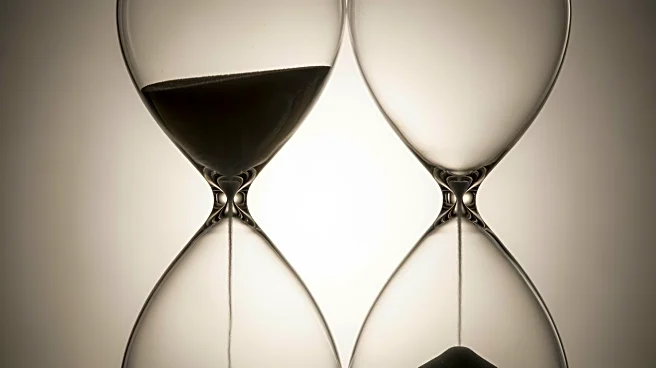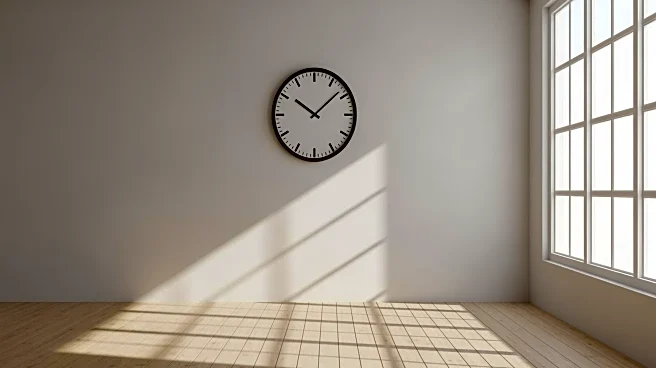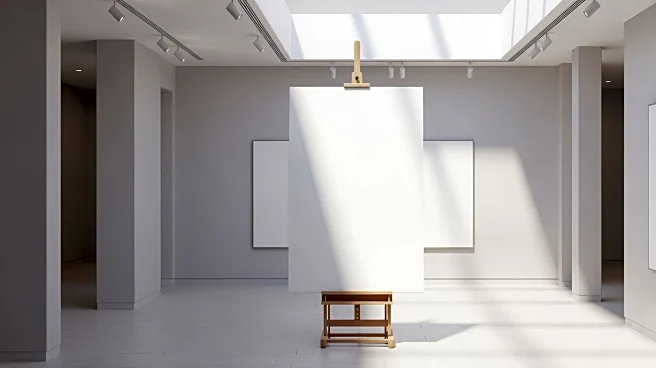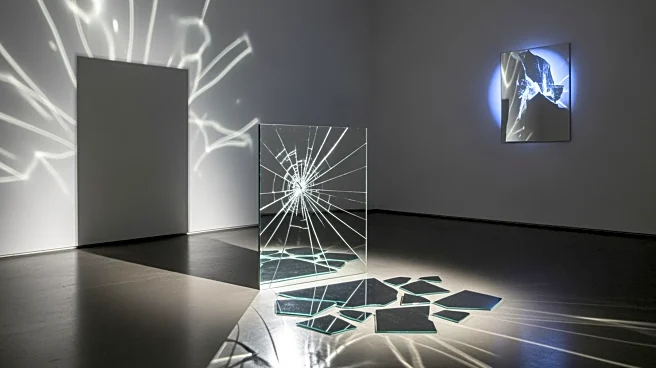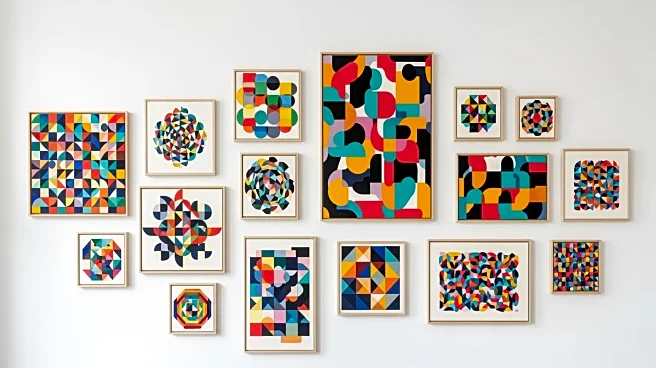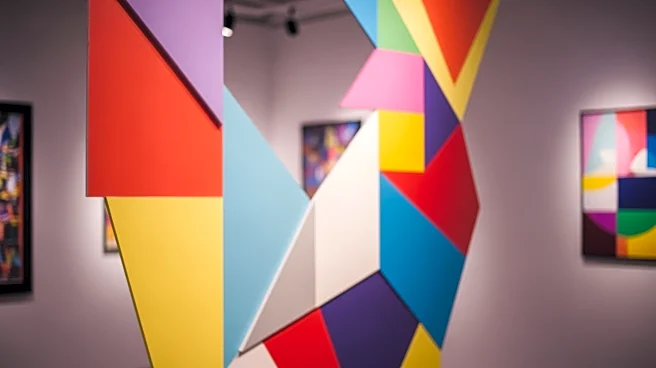What's Happening?
Tehching Hsieh, a pioneering performance artist known for his intense and prolonged works, is the subject of a retrospective exhibition at Dia Beacon in New York State. The exhibition, titled 'Lifeworks
1978-99,' showcases Hsieh's six major performance pieces, which span 18 years and explore themes of confinement, exposure, and the passage of time. Hsieh's works include the Cage Piece, where he lived in a wooden cage for a year, and the Time Clock Piece, where he punched a time clock every hour for a year. The exhibition is designed to spatially convey the relative time it took to perform the works against time just living, which Hsieh refers to as 'art time' and 'life time.'
Why It's Important?
Hsieh's work challenges traditional notions of art by integrating life experiences and the passage of time into his performances. His approach emphasizes the continuity of life and the human experience of time, offering a unique perspective on the relationship between art and life. The retrospective at Dia Beacon provides an opportunity for audiences to engage with these concepts, encouraging reflection on how time shapes human existence. Hsieh's work is significant in the art world for its innovative use of duration and its exploration of existential themes, influencing contemporary performance art and expanding the boundaries of artistic expression.
What's Next?
The exhibition at Dia Beacon is set to run until 2027, allowing ample time for visitors to explore Hsieh's work and its implications. As audiences engage with the exhibition, discussions around the nature of time, art, and life are likely to continue, potentially influencing future artistic endeavors and academic discourse. Hsieh's work may inspire other artists to explore similar themes, leading to new interpretations and expansions of performance art. The exhibition also provides a platform for Hsieh's legacy to be appreciated by a wider audience, solidifying his impact on the art world.
Beyond the Headlines
Hsieh's work raises questions about the role of the artist and the nature of art itself. By blurring the lines between art and life, Hsieh challenges viewers to reconsider their perceptions of both. His performances, often conducted under conditions of personal hardship, reflect broader themes of human resilience and the search for meaning. The exhibition at Dia Beacon invites viewers to contemplate these deeper implications, fostering a dialogue about the ethical and philosophical dimensions of art. Hsieh's work serves as a reminder of the power of art to provoke thought and inspire change.
